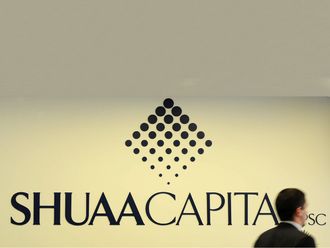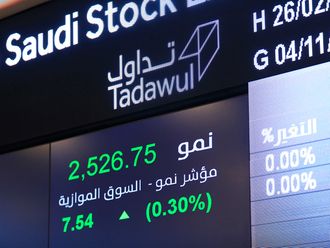Mumbai: The raging bullish fervour in Indian equities faces a tough test as New Delhi grapples with the dilemma of battling a downturn in economic growth, amid rising public anger against rising prices, particularly fuel, when household budgets are under strain and the jobs scene remains dismal.
Retail prices of petrol and diesel have soared to their highest levels in over three years even as world crude costs have tumbled more than half. Heavy taxes by both the central as well state governments have made fuel prices in India the highest in the world, pinching the pockets of the middle class and the poor the most.
Economic growth has been slowing for five quarters, rocked in part by demonetisation and the launch of a new national sales tax. Growth in April-June slumped to the weakest in more than three years, while retail inflation in August accelerated to a five-month high on the back of a jump in food prices.
“It’s like burning a candle from both ends,” said an executive at one foreign fund, who did not want to be identified. “Slowing growth and rising prices portend a deadly cocktail that can trigger widespread public discontent.”
Doubtlessly, pressure is mounting on Prime Minister Narendra Modi’s administration to stem the rot, and help revive the growth momentum. It has to act fast before public opinion gathers strength and forms a torrential wave against the government, with elections to some state assemblies coming up over the next few months — and the national polls due in two years.
Already primetime TV debates on scores of news channels are focused on the deepening crisis, and opposition politicians are relishing the thought of getting a handle on the issue to beat the government with.
Multiple roadblocks
Barclays said in a report released on Friday that it expected India’s GDP growth in 2017-18 to slow sharply to 6.9 per cent, from the 7.8 per cent it had forecast earlier, saying there were multiple roadblocks and the June quarter data was a “downside surprise”.
Acknowledging there was a problem, Finance Minister Arun Jaitley held several rounds of discussions with officials and others, and said the administration was considering stimulus measures. A formal announcement on the policy details is expected after Modi’s approval. Media reports, quoting unnamed mandarins in New Delhi, say the government is contemplating a stimulus package of between Rs400 billion (Dh22.6 billion) and Rs500 billion.
There are many pitfalls, however. With private-sector investment in the doldrums because of a debt pile-up and excess capacities, the government has been spending heavily on large infrastructure projects such as highways, metro rail systems, housing, ports, airports and so on hoping this would act as a catalyst to generate jobs and encourage manufacturing units to come up.
The hectic spending has taken a toll: In four months, from April to July, the fiscal deficit reached 92 per cent of the budgeted figure for 2017-18. In other words, the government is running out of cash, and will have to find cash from divestments and taxes quickly to avoid overshooting the deficit target of 3.2 per cent of GDP.
Tax receipts are likely to lag because of the slowdown, especially in the manufacturing sector. The teething problems with the new Goods and Services Tax (GST) show no prospect of resolution almost three months after the launch, including filing of returns. The disruptions caused by last November’s abrupt withdrawal of high-value notes comprising 86 per cent of the currency in circulation and the GST have delivered a big blow to the tiny unorganised sector, which was undoubtedly the biggest employer.
To make up the shortfall, the taxes on fuel are indispensable for the central and state governments, irrespective of whichever party or coalition is in power.
Hard options
New Delhi has budgeted to raise Rs720 billion from asset sales in state-controlled companies. Unlike in recent years when targets were never met, the government has a good chance of getting the job done now thanks to a buoyant stock market. However, it has to move quickly with share sales when the iron is hot.
On Friday, an initial public offering by SBI Life Insurance Co Ltd to raise Rs84 billion was subscribed more than 3.5 times, underscoring the robust appetite for paper. The IPO was the biggest in seven years, after Coal India’s Rs155 billion sale in 2010.
Cash raised by companies from IPOs has reached $4.4 billion so far in 2017, and looks set to exceed the record $8.5 billion done in 2010 based on the scores of offerings waiting in the wings.
The government can also look at using a tiny portion of its record $402.5 billion foreign exchange stockpile to fund infrastructure projects. Deutsche Bank India economist Kaushik Das estimates that by using $15 billion would knock just 3.5 per cent of the total reserves but would add 0.6 percentage points to GDP.
Tax-spared bonds could also be offered to attract large household savings and finance highway or power projects. Some analysts say New Delhi can loosen the fiscal deficit to 3.7 per cent of GDP, provided the excess borrowings are funnelled into productive sectors.
However, any relaxation in the fiscal discipline will not go down well with foreign investors, who admire Modi’s strong push for tough reforms and believe that in the longer term the GST and other policy initiatives such as the bankruptcy charter, efforts to address the bad debts in banks, faster decision-making and ease of doing business would bolster growth.
Jahangir Aziz, head of emerging market economic research at JP Morgan, is not a fan of prime pumping because it demands a heavy price. “In India, fiscal stimulus has always ended up in tears,” he told BloombergQuint, citing the runaway inflation that followed the 2008-09 package to ward off the global banking crisis.
“Everybody wants to give it. Nobody wants to withdraw it. We started to withdraw the stimulus only when the taper tantrum hit India in 2013 and we had to adjust.”
His caution cannot be wished away. The rupee, one of the top performing currencies this year, took a knock on worries that any slippage in the fiscal deficit target could undermine the currency. The top-30 Sensex shed 1.1 per cent over the week to 31,922.44 and the 50-share Nifty dropped 1.2 per cent to 9,964.40.
Both the benchmark indices, which have risen by a fifth this year riding on surging domestic savings into financial assets in the wake of falling interest rates and subdued property markets, could face more resistance if corporate earnings do not pick up.
“Smart management of fiscal deficit, and a tight monetary policy by the Reserve Bank of India have resulted in significant macro-economic stability,” the Hindustan Times said in an editorial. “This has been hard-won and shouldn’t be sacrificed at the altar of populism — at least not entirely so.”
The government should focus on reviving investment growth through public investment while resisting the temptation to announce populist sops that temporarily boost consumption, the newspaper said.
“An aggressive disinvestment policy and the anticipated extra revenue from GST could give the government enough room to spend more. It is the only long-term solution to slowing growth.”
Perhaps the authorities also could lend an ear to HSBC economists Pranjul Bhandari and James Pomeroy, who prefer measures to make it easier to do business, nurse back banks and bolster health care and education.
“We argue that India could be at a transition point — and that a stronger India, what we call India 3.0, is in the making,” they wrote in a report. “There is a lot that needs to be fixed to ensure this is not merely another false start.”
(The writer is a journalist based in India)












